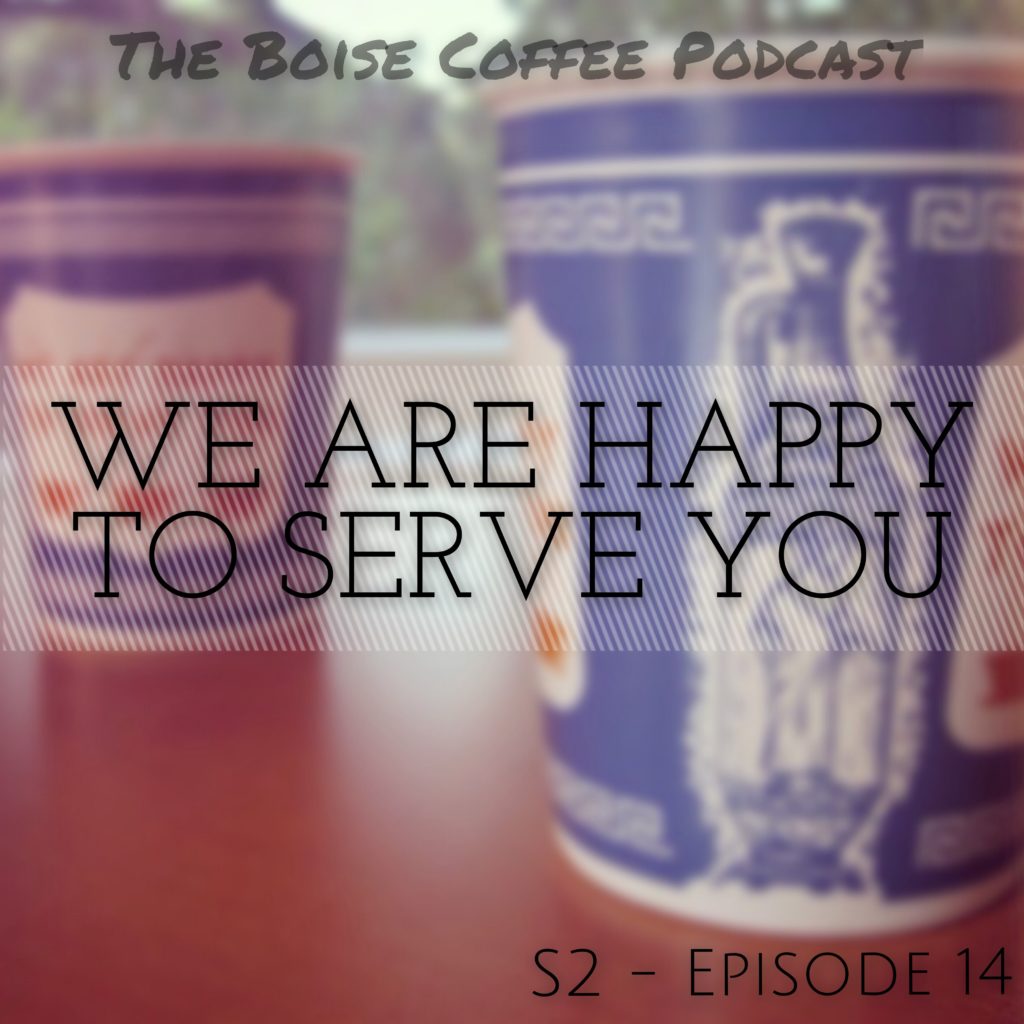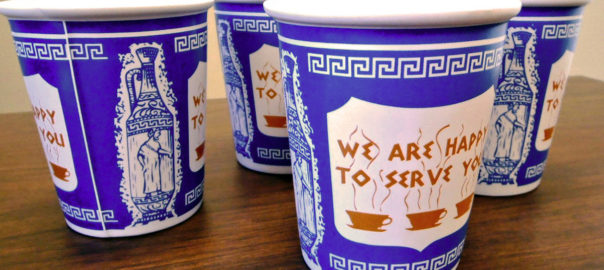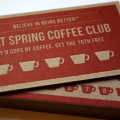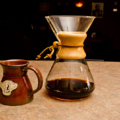
If we’re honest with ourselves, coffee shops provide a very utilitarian function during most of our week. They’re there to provide us with morning-saving caffeine-infused goodness on our way to work. In this episode we dive headlong into the world of to-go coffee by looking at the story of Leslie Buck and his famous Anthora Cup. To get there, though, we’ll first need to talk about water and the Spanish flu.
This week’s episode is brought to you by WMF Coffee Machines. Whether you’re looking to build a new coffee workstation for your business, or you’re looking for a simple drip brewer for your office, WMF has plenty of options to choose from. Find out more at wmf-coffeemachines.uk.com.
Colin
Episode Transcript:
This episode of The Boise Coffee Podcast is brought to you by WMF Coffee Machines. WMF is the leading international manufacturer of fully automatic commercial coffee machines, and their offerings range from state-of-the-art filter coffee machines all the way to professional barista-grade equipment. To find out more, visit wmf-coffeemachines.uk.com. Again that’s wmf-coffeemachines.uk.com.
There’s nothing quite like relaxing in a coffee shop and enjoying a latte or drip coffee on a lazy Saturday. Whether you’re reading a new novel, thinking about the week ahead, or enjoying some casual people watching, the coffee shop ritual has something to offer for everyone. For the introvert it can provide a haven of self-reflection and alone time. For the extrovert it can be a meeting place for friends. Coffee shops provide a ubiquitous appeal for the casual date, and act as a home-away-from home for millions of people around the world.
But if we’re honest with ourselves, coffee shops provide a more utilitarian role during our work-weeks. More often than not, they are simply a place to go and grab coffee on our way to work.
On this podcast I tend to focus more on the romantic, lazy-Saturday approach to coffee. On this week’s episode, however, we’re going to plunge headlong into the hustle and bustle of to-go coffee, and more specifically, a cup that the New York Times described as “perhaps the most successful cup in history.” To get there, however, first we need to talk about water, and a flu pandemic that killed 1 out of every 20 people on earth.
I’m Colin Mansfield, and welcome to The Boise Coffee Podcast.
-Theme-
In the late 19th century and early 20th century America entered into a period now known as the Progressive Era. During this time many Americans saw the government and big-business as corrupt, and they sought reform. One of the byproducts of this era was the Prohibition. Born out of a desire to break up the political power of local bosses based in bars, combined with influential protestant ministers and their congregations, organizations like the Anti-Saloon League sprang up across the U.S. This movement wasn’t unique to the U.S., however (although banning Alcohol nation-wide was). Temperance, the social movement against the consumption of alcohol, had been around as early as 1820 and had taken various shapes and forms not only in the U.S., but England, New Zealand, and Australia as well.
One of the ways that subscribers to the Temperance movement provided an alternative to alcohol was through communal water fountains and temperance wagons. The water fountains were a stationary way to help quench the thirsts of would-be drunks, while the wagons provided a mobile solution that could travel bar-to-bar. Folks that were trying to stay away from the dangers of alcohol could climb aboard. If they succumbed to temptation…well, that’s where the term “off the wagon” came from.
All of this water-sharing was usually done with a communal cup, or mug. That’s fine, unless, of course, you know about germs. Not a lot of people did in the early 20th century, but word started to get around because of people like Lawrence Luellen, a Boston lawyer and inventor. He had an idea that was in direct opposition to the thrifty culture of lower and middle-class America at that time. He suggested that instead of sharing one cup, each person could have their own, disposable cup. He invented a primitive paper cup which he called the “Health Kup.” Five years later, however, he changed the name to that of a popular line of toys: Dixie Dolls. And thus, Dixie Cups were born.
In 1918 the Spanish flu swept in, and it turned into one of the deadliest natural disasters in human history. It infected 500 million people across the world – roughly one-third of the world population – and resulted in the deaths of anywhere between 50 million and 100 million people. Most influenza breakouts were known to kill juvenile, elderly, or already weakened patients. The Spanish flu, on the other hand, killed seemingly healthy young adults. In fact, more U.S. soldiers died from the flu after returning from war then were killed in battle. The Spanish flu didn’t let up until the summer of 1919 and by then being a hypochondriac was the norm. Disposable items like paper cups suddenly weren’t seen as a wasteful commodity, but as a healthy way of living.
The transition from drinking water out of disposable cups to drinking coffee from to-go cups was completely natural. In 1933 the first patent for handles to attach to paper cups was filed, and three years later a cup with handles was invented to mimic mugs. By the 1950s patents were being filed for paper cup lids, specifically designed with hot beverages like coffee in mind. It makes sense – WWII-era adults were drinking more coffee, more often than we do today. Generic to-go coffee cups were hitting the mainstream, but one thing they lacked was a sense of style.
Laszlo Büch was born on September 20th, 1922 in Khust, Czechoslovakia (now Ukraine). His family was Jewish, and in WWII both of his parents were killed by Nazis. Laszlo and his brother were survivors of Buchenwald and Auschwitz concentration camps.
After the war, the brothers made their way to New York City, Americanized their names, and ran an import-export business. Over the next 20 years the brothers, now known as Leslie and Eugene Buck, epitomized the spirit of American entrepreneurship by participating in, and eventually shaping, the paper to-go cup market that was just beginning to evolve.
In the late 1950s the brothers started Premier Cup, a paper-cup manufacturing company that they ran out of Mt. Vernon, NY. In the mid-60s Leslie began working for Sherri Cup, a startup, as the company’s Sales Manager. That was a bit of a misleading title though, as Mr. Buck actually made up their entire sales-force. As the company grew, however, Leslie became its Director of Marketing.
At this time the businessmen and women of New York City were fueled by diner coffee. Their morning coffee experience wasn’t dissimilar from today’s ritual; in the early hours of the morning customers would flock to their nearest diner and order coffee to-go, then sip it on their commute to work. Each of these to-go coffees needed a to-go cup, and so coming up with a unique design that New York diners would prefer to serve their morning brew in became a top priority for companies like Sherri Cup.
Leslie Buck started looking around at the diners in New York City and noticed something interesting: many of them were owned by Greeks. Though he had no formal training in art or design, Mr. Buck decided to come up with a new cup that popular diners in NYC would want to buy above all others. He started with the colors of the Greek flag: blue and white. From there, he added a pattern of interlocking right-angled spirals, better known as a Greek key, along the top and bottom. He placed a set of Grecian Amphora vases along the sides, and in the middle, surrounded by a white plane and above a trio of steaming cups of coffee he wrote a phrase in gold, Greek-styled lettering:
“We Are Happy To Serve You.”
Leslie named the cup after the Amphora vases that he used to decorate it, but in his Eastern European accent it sounded more like “Anthora.” The name stuck.
How the cup was received, after the break.
-Ad break-
This episode of The Boise Coffee Podcast is brought to you by WMF Coffee Machines. If you’re like me and you’re always looking for new coffee gear to try out, WMF offers a wide variety of accessories to take a look at. These include a heated cup rack, complete with four shelves and an illuminated back that lets you set the color, a paper-cup dispenser that’s perfect for your workplace or small gathering, and a mobile coffee station capable of handling both fresh water and waste water. WMF doesn’t stop there, however. Their website is complete with online coffee recipes. They break down classic espresso-based beverages like the cappuccino and espresso macchiato into layman’s terms, and they have a gallery of specialty drinks as well. These include the “Mozart coffee” containing espresso, steamed milk, marzipan cream liqueur, and chocolate sauce, as well as the Sweet Coconut Dream containing espresso, milk foam, Batida de Coco, and chocolate sauce. To check out all of WMF’s accessories and their full list of coffee recipes, visit wmf-coffeemachines.uk.com. Again that’s wmf-coffeemachines.uk.com
-End Ad Break-
The cup was an instant success. Between the mid-60s and the 1990s, hundreds of millions were sold annually. It took on a symbolic role as well – showing up in TV shows like Law & Order, and movies like Men in Black. This helped solidify the Anthora Cup as a representative for more than just coffee – it was a symbol for New York City itself. At the cup’s peak, in 1994, the Sherri Cup Company reportedly sold 500 million Anthora Cups. Not only that, but Solo – the makers of the ubiquitous and infamous red cup – ended up acquiring Sherri Cup Company largely due to the success of the Anthora Cup.
Leslie Buck received no royalties for his design, but he did so well on sales commissions over the years that it hardly mattered, according to his son. Mr. Buck retired from the Sherri Cup Company in 1992, and as a going-away gift the company presented him with 10,000 Anthora Cups that were printed with a testimonial inscription.
Since the 1990s, demand for the cups has waned. In 2005 a Solo spokeswoman told The New York Times that Anthora cup sales had dipped down to 200 million that year. By 2007, the cup was considered an endangered artifact. The reasons for the decline are likely tied to the 1994 arrival of Starbucks in NYC – they became the go-to morning coffee destinations for many New Yorkers, causing diners to try and compete with trendier cup designs. 9/11 likely played a role as well. Following the terrorism attack many restaurants began offering patriotic and flag-themed cups.
In 2014 John Tramaglia, a representative for Dart Container Sales Company (the company that had acquired Solo years earlier), set out to find an Anthora cup to be displayed in a New York Historical Society exhibit titled “A Brief History of New York: Selections from A History of New York in 101 Objects.” His search led him to an online store called New York First Co., and he discovered something fascinating: the cup was living on.
John said, “I found New York First was selling it to places like the Standard Hollywood Hotel in West Hollywood, California, so East Coast visitors and transplants could ‘feel at home’ in L.A. They also sell the Anthora cups as props to a few film companies, including Martin Scorsese’s production company.”
The cup lived on in other ways too. The Museum of Modern Art started selling ceramic versions, and its likeness was licensed for coin purses, cufflinks, and watches. Not only that, but knock-off cups bearing similar Greek designs but a slightly altered inscription were being sold city-wide as well.
“It seemed clear that with so many knock-off Greek prints based on the Anthora design from our competitors in the New York market, there was an opportunity for us to get back in the game with the original design.” That’s John Tramaglia again.
After a nine-year hiatus from regular circulation, Dart Container Sales Company brought it back. Starting in July 2015 the Anthora Cup returned as a regular stock item in the New York City Market.
There’s no question that the Anthora Cup is an icon of New York City. Because of its abiding presence, however, it goes beyond merely east-coast fame. For many people, whether they know it or not, the Anthora Cup is a seminal icon of western coffee as a whole. What it represents, however, goes much deeper than cup sales and diners. The Anthora Cup stands for the efforts of a man looking to rebuild. It symbolizes rebirth, in more ways than one, and what can be achieved at the intersection of hard work, tenacity, and a little luck. In many ways, it represents the American Dream.
Thanks for listening to The Boise Coffee Podcast. I’m your host, Colin Mansfield, and I’m excited to announce that next week I’ll be traveling to Italy for a much needed vacation and to celebrate my first wedding anniversary with my wife. The next episode will air in 3 weeks, and my wife and I are going to sit down together and record our thoughts on Italian coffee. I’m excited to share our experiences in the place best-known for espresso. If you’d like to listen to other episodes of the podcast, you can find them on iTunes, Stitcher, SoundCloud, and my blog – BoiseCoffee.org. If you’d like to get in touch with me you can hit me up on Twitter – my handle is @BoiseCoffee. Thanks for listening, and I’ll talk to you again in three weeks from beautiful Rome. Ciao!
This episode of The Boise Coffee Podcast was brought to you by WMF Coffee Machines. Whether you’re looking for a simple office machine or robust professional barista grade equipment, WMF has what you’re looking for. Visit wmf-coffeemachines.uk.com to find out more. Again, that’s wmf-coffeemachines.uk.com.
Podcast: Play in new window | Download
Subscribe: Apple Podcasts | Android | Stitcher | RSS



